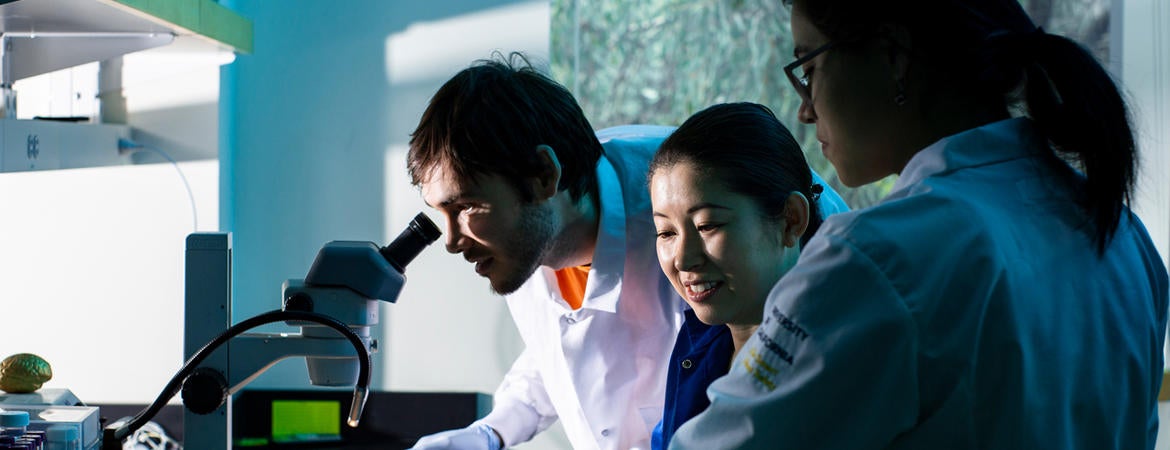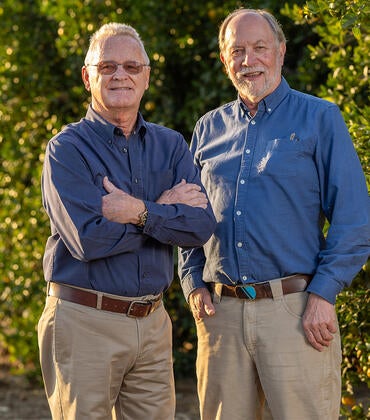
Jing Shi, a professor of physics
The Spins and Heat in Nanoscale Electronic Systems center, known as SHINES, at the University of California, Riverside, has received funding for two more years from the Department of Energy. SHINES received $12 million from the department in 2014.
The new funding of $1.9 million is part of $100 million in funding for 42 Energy Frontier Research Centers, or EFRCs, that Secretary of Energy Rick Perry announced today. The EFRCs help to accelerate scientific understanding in diverse energy-relevant fields including catalysts, electro- and photo-chemistry, geoscience, quantum materials, and nuclear and synthesis science.
The current cohort of 42 EFRCs, selected by highly competitive peer review, includes 22 new centers and nine existing ones that were renewed. Based on favorable peer reviews, another 11 existing centers, including SHINES, were awarded two-year extensions to support the completion of valuable research still in progress.
“America’s continued energy security and global competitiveness will depend vitally on a sustained effort in science and discovery,” Secretary Perry said. “By mobilizing the talents of our nation’s top scientists and forging them into powerful, pro-active teams, the EFRC program will help ensure America’s leadership in the development of critical energy technologies and innovations.”
SHINES researchers investigate several aspects of energy science: new ultrathin films and heterostructures of quantum materials, novel phenomena that can lead to high-efficiency nanoscale electronic devices, and the transport of electron spins, phonons, and energy.
“We are extremely pleased SHINES has received additional funding from the Department of Energy,” said Jing Shi, a professor of physics and the principal investigator of SHINES. “The new funding will allow us to continue some exciting research started here at UCR and some participating institutions.”
Recent SHINES research breakthroughs include discoveries of high spin-electricity conversion using quantum heterostructures, new particles (chiral Majorana ferimions) in solid state heterostructures, and modification of crystal vibration energy in nanowires.
To date, SHINES researchers have produced 124 peer-reviewed scientific publications, 24 of which were published in the Nature and Science family of journals, and generated three inventions at various stages of the patent process.
“Jing Shi and his collaborators at UCR and other leading research institutions have made remarkable progress over the past four years,” said Michael Pazzani, vice chancellor for research and economic development at UCR. “I’m pleased to see the project continue to develop further fundamental insights into spin and heat in electronic systems. These insights will lead to more new materials that enable energy-efficient electronics and improvement in battery life.”
Established by the Department of Energy’s Office of Science in 2009, the EFRC program brings together researchers from multiple disciplines and institutions — including universities, national laboratories, and nonprofit organizations — and combines them into synergistic, highly productive teams.
Research in SHINES involves the participation of UCR faculty in the College of Natural and Agricultural Sciences and the Marlan and Rosemary Bourns College of Engineering. Other SHINES researchers are based at Arizona State University, Johns Hopkins University, UC Irvine, University of Texas at Austin, UCLA, and Colorado State University at Fort Collins.




